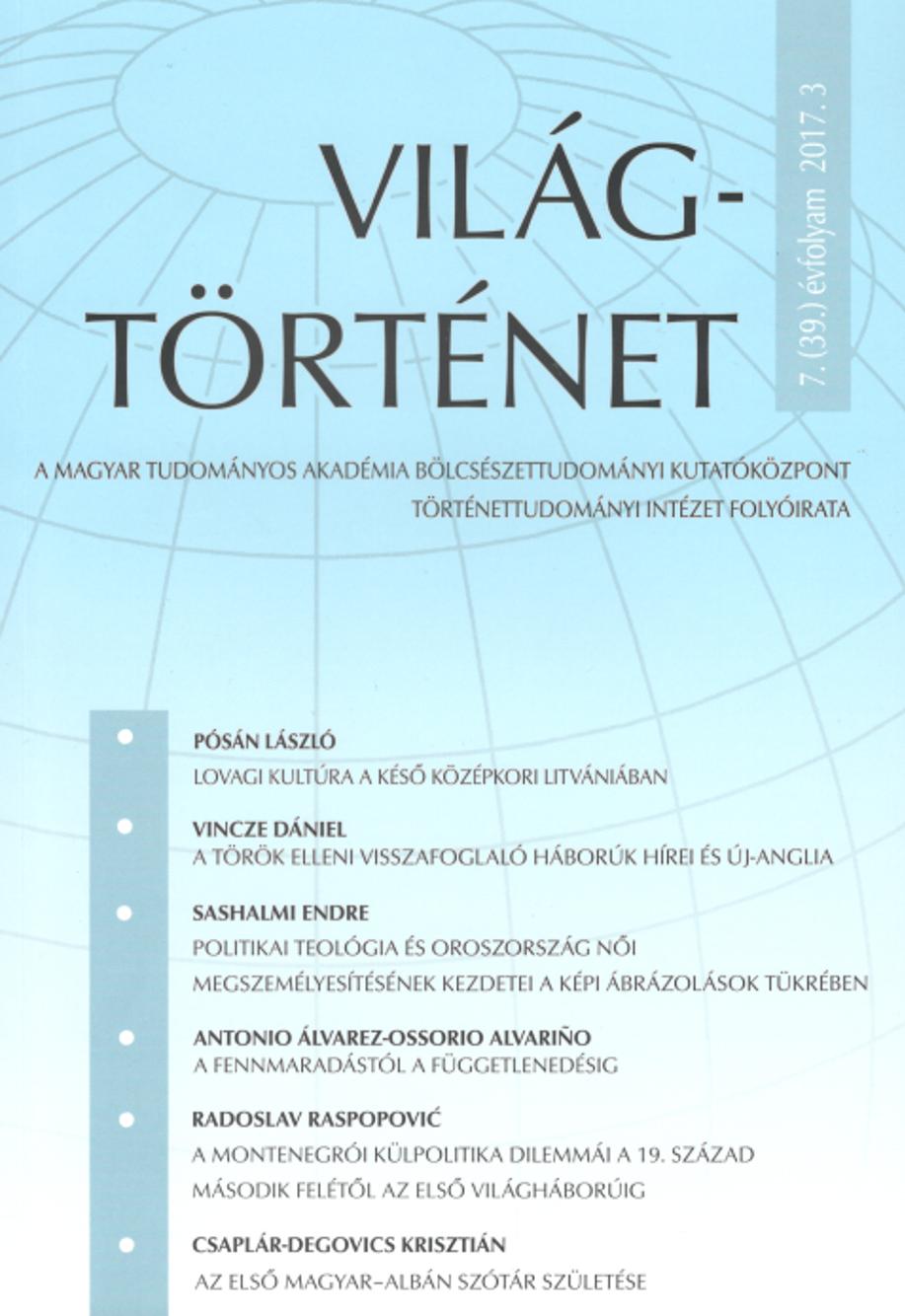Politikai teológia és Oroszország női megszemélyesítésének kezdetei a képi ábrázolások tükrében, európai perspektívából. Nagy Péter uralkodása mint vízválasztó
Political Theology and the Emergence of Female Personifi cations of Russia in Visual Sources from a European Perspective: The Petrine Period as a Watershed
Author(s): Endre SashalmiSubject(s): 17th Century
Published by: Magyar Tudományos Akadémia Bölcsészettudományi Kutatóközpont Történettudományi Intézet
Summary/Abstract: This article argues that the appearance of female personifications of Russia in visual sources began with Peter the Great, as a result of the westernization of Russian imagery. In Western Christendom in the Middle Ages and the Early Modern period this phenomenon was intrinsically rooted in the importance of allegorical representation which almost exclusively used the female body for this purpose. Besides this state of mind, antique models were also crucial, such as the Roman representation of provinces as females on coins, and especially the figure of Goddess Minerva served as the main source of inspiration for personifying the realm (the ‘nation’) during the Renaissance. As the Orthodox Church banned classical mythology, because it was considered pagan, and classical heritage was absent in Russia, the ‘broad cultural context’ of Western Christendom was very different from the ‘iconic type’ of imagery dominant in Muscovite Russian culture before Peter the Great. The other major factor hindering the appearance of female personifications of Russia was the lack of political theology, i.e. appropriation/borrowing of theological concepts for secular, political purpose. Under these circumstances the religious notion shared by both Western and Eastern Churches, i.e. that Christ is the bridegroom, and the Church is Christ’s bride, produced a very different result in Muscovy. In the West it strengthened the distinctiveness of the kingdom with rights of its own, and contributed to the factors fostering female representation of the realm, whereas in Muscovy it served the sacralisation of the ruler’s person.
Journal: Világtörténet
- Issue Year: 2017
- Issue No: 3
- Page Range: 373-394
- Page Count: 22
- Language: Hungarian

